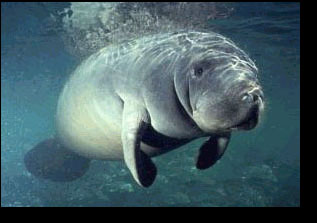The Estuarine Crocodile or "Saltwater Crocodile" is the world's largest living reptile typically growing up to 19 ½' in length and weighing as much as 2400 lbs, although larger sightings have been recorded. Despite their astonishing size the modern croc is small compared to its prehistoric ancestor
Sarcosuchus imperatoro or "flesh crocodile emperor" which was a whopping 40' long and managed very nicely, thank you, during the early Cretaceous, 110 million years ago. The size of a London tourist bus this prehistoric animal lived at the top of his food chain and nothing was safe in its world.

This river dwelling predator dined on small dinosaurs which were careless enough to come too close to the water earning it the name used today, "Mugger" from the sanskrit "makara", water monster, "magar" in Hindi and "mug" (Fr), to punch in the face, and what a devastating punch that would have been. Scientists have pieced together the creature's history from fossil skulls and bones discovered as far back as 1964. They think the croc's huge size was due to its long life span: it took around 60 years to grow to full size.
Today there are 23 modern species of crocodile including the American Crocodile, of which 17 are endangered and for good reason. Although modern crocs remain top predator in their world, it is no longer "their world." In less than half a century and for the second time in modern history a living crocodile species is in danger of extinction. It nearly happened in Australia during the 1950s when unregulated hunting for their hides, which are highly prized by the fashion industry, decimated the population of
Crocodylus porosus "Saltwater Crocodile." Intervention by the Australian government has stabilized their numbers although they remain on the protected list.
50 years later in Florida, the only North American habitat of the American Crocodile,
Crocodylus acutus, there are just an estimated 1000 individuals. The USFWS recently took under consideration down listing Florida's population from "endangered" to "threatened", read the full story "
300 Million Years and Counting."
According to
The National Parks Conservation Association, "As the American crocodile expands into its historic territory, alterations of key habitat continue to cause problems." The consensus therefore is that removing the American Crocodile from protection would fail the animal, because of continued, "human intolerance." The American Crocodile is not the monster of prehistory and there has never been a report of any attack on humans. The fact is there is very little reason to change the protected status of Florida's only living fossil unless you consider the economic incentive that motivates the Fed's primary advisor on the subject, the Crocodile Specialty Group.
CSG is an industry supported group of manufacturers, processors and their paid for r&d facilities, principally
The University of Florida, Gainesville who have a vested interest in reducing the croc to unprotected status thereby opening the way to a profitable trade in "sustainable use" for a few who would farm this amazing creature for its hide and meat. It appears that native species of Florida are now all up for sale to the highest bidder. The University of Florida is dead in the middle, brokering their so called "wildlife preservation" for profit, and Florida citizens, human and animal alike are the losers all 'round
______________________________
To learn more about Crocodiles we strongly recommend the site
Crocodile Hunter. Engaged in croc research for more than 30 years they have a regard for these magnificent animals and knowledge that seems to promise true conservation and safety rather than the exploitation and misery crocs face at the hand of commerce.
 The endangered manatee is currently facing multiple attacks in Florida and Defenders of Wildlife needs your help to stop them. After weeks of stalling, Senate Bill 540 (SB 540) has finally reached Florida Gov. Jeb Bush's desk for review. He now has until June 30 to either veto this bad bill, sign it into law, or do nothing. If he signs the bill or does nothing, it will become law and weaken manatee protection. And despite close to 20,000 e-mails from you asking him to veto it, we've heard word from people close to the governor's office that he may just let the bill go without doing anything in order to avoid political pressures. We need him to take a stand for the manatee and VETO SB 540 to safeguard protections for the endangered species.
The endangered manatee is currently facing multiple attacks in Florida and Defenders of Wildlife needs your help to stop them. After weeks of stalling, Senate Bill 540 (SB 540) has finally reached Florida Gov. Jeb Bush's desk for review. He now has until June 30 to either veto this bad bill, sign it into law, or do nothing. If he signs the bill or does nothing, it will become law and weaken manatee protection. And despite close to 20,000 e-mails from you asking him to veto it, we've heard word from people close to the governor's office that he may just let the bill go without doing anything in order to avoid political pressures. We need him to take a stand for the manatee and VETO SB 540 to safeguard protections for the endangered species.















